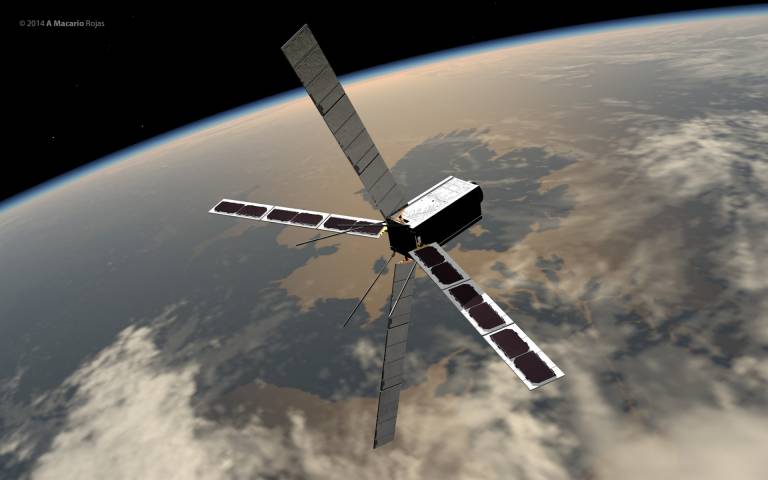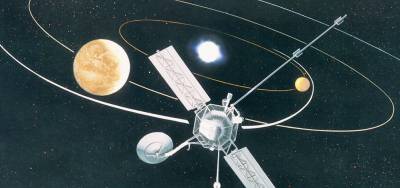Down close and personal: New project to run satellites nearer to Earth
6 March 2017
A €5.7m project to develop technologies that will allow satellites to survive and operate at orbits closer to Earth than ever before - considerably lower than the international space station - has recently been launched.

The project is funded under the European Commission's Horizon 2020 programme and will go a significant way to making satellites smaller, cheaper, dodge space debris and improve the quality of images they can send back. UCL Mullard Space Science Laboratory (MSSL) is a key participant in the project along with 8 other institutes from 7 European countries.
Dr Peter Roberts, Scientific Coordinator for the project, said: "Remote sensing satellites are widely used to obtain imagery for environmental and security uses such as agricultural land management, maritime surveillance and disaster management. If we are able to get satellites closer to Earth then we can get the same data using smaller telescopes, or smaller and less powerful radar systems, all of which reduces the satellite mass and cost. But there are also many technical challenges which until now have been too great to overcome. This research tackles the problem on a number of fronts."
At Very Low Earth Orbits, 450 down to 200 kms above the Earth's surface, the atmosphere rapidly gets denser, with atmospheric drag shortening the life of a satellite significantly. In order to minimise this, the team will develop advanced materials and test them in a new 'wind tunnel' which mimics the composition, density and speed of the atmosphere as seen by a satellite at these altitudes. This will allow the team to test how materials interact with individual atoms of oxygen and other elements in the atmosphere at speeds of up to 8km per second. The ultimate aim is to be able to use these materials to streamline the satellites. UCL will develop an advanced diagnostic system for the wind tunnel that will be required for characterising the interactions as well as contribute towards understanding the science behind these interactions.
In addition, the team will develop experimental electric propulsion systems which use the residual atmosphere as propellant. This approach has the potential to keep the satellites in orbit indefinitely despite the drag acting upon them. However, it also means that the satellites will re-enter quickly when they've reached the end of their mission avoiding the space debris problems experienced at higher altitudes.
The team will also test the materials on a real satellite launched into these lower orbits while simultaneously monitoring the local environment with UCL MSSL's in-situ mass spectrometers. The satellite will also demonstrate how the atmospheric flow can be used to control the orientation of the satellite, much like an aircraft does at lower altitudes.
" Dhiren Kataria, the project lead at UCL MSSL said "This is an exciting project bringing together materials and propulsion research, space aerodynamics and in-situ test and diagnostics systems, and is anticipated to deliver a major leap in the state-of-the-art."
Partners in the research are The University of Manchester, Deimos Castilla La Mancha, GomSpace, University of Stuttgart, Universitat Politecnica de Catalunya, UCL MSSL, The TechToybox, EuroConsult and Concentris research management. The project is scheduled to run for 51 months from January 2017.
Links
- UCL Mullard Space Science Laboratory
- University of Manchester
- GomSpace
- University of Stuttgart
- Universitat Politecnica de Catalunya
- The TechToybox
- EuroConsult
- Concentris research management
 Close
Close




